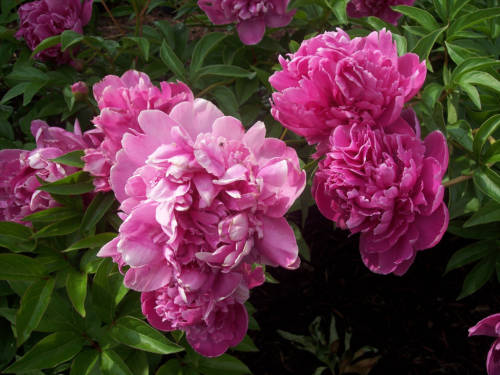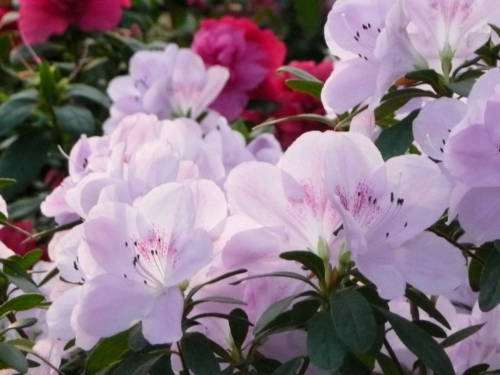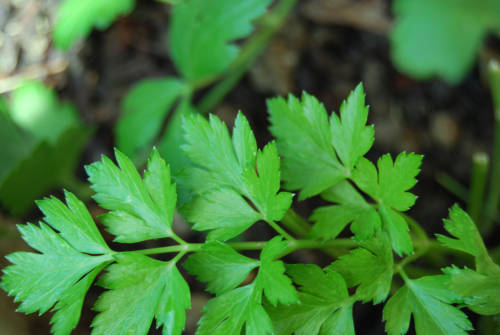
How To Keep Rabbits Out of the Garden
Despite a legacy in popular culture that’s defined by cute childhood characters like Bugs Bunny, Peter Cottontail, and Thumper, rabbits are one of the known archenemies of the gardening world. Even though they represent grace and kindness in the Chinese Zodiac, rabbits can wreak as much havoc on a garden as any other pest— they nibble on vegetables, they tear up the soil, they burrow holes under fences, they carry diseases like Tularemia, and to make it all worse: they can outrun us. Plus: once a rabbit has invaded a garden it will always return.
For most gardeners, rabbits present something of a moral dilemma. We feel bad for hating them because they otherwise seem like innocent creatures, and many failed attempts to thwart a rabbit problem can cause as much frustration as the chewed up vegetables rabbits leave in their wake. The Internet is also full of rabbit advice that sounds like hocus pocus—“sprinkle your garden with dried blood! Repel rabbits with human hair!”—so its difficult to know what are the most effective alternatives. Most seasoned farmers will tell you, “The only way to fix a rabbit problem is to shoot the rabbits!” but most of us are understandably uneasy with that prospect, even if they are a nuisance.
Here are five time-tested and humane ways to get rid of rabbits—with a little luck and persistence; the extra effort will pay off.
Plant Plants That Rabbits Dislike
Introducing plants that rabbits aren’t likely to eat is also useful for keeping away deer, since the two animals typically dislike the same things. Forsythia, lilac bush, marigolds, zinnias, daffodils, lavender and snapdragons are beautiful options that also help keep rabbits at bay. Check out a list of more anti-rabbit plants, courtesy of the Old Farmer’s Almanac, below.
PERENNIALS
- Adam’s needle (Yucca filamentosa)
- Creeping phlox (Phlox subulata)
- Foam flower (Tiarella cordifolia)
- Lamb’s ear (Stachys byzantina)
- Meadow rue (Thalictrum rochebrunianum)
- Peony (Paeonia hybrids)
- Perennial salvia ‘East Friesland’ (Salvia x superba)
- Primrose (Primula x polyantha)
- Russian sage (Perovskia atriplicifolia)
- Sedum ‘Autumn Joy’ (Sedum)
- Speedwell (Veronica sp.)
- Spring cinquefoil (Potentilla verna)
- Stokes’ aster (Stokesia laevis)
WOODY PLANTS
- Azalea (Rhododendron sp.
- Boxwood (Buxus sp.)
- Bush cinquefoil (Potentilla fruticosa)
- Butterfly bush (Buddleia davidii)
- Cotoneaster (Cotoneaster sp.)
- Japanese maple (Acer palmatum)
- Mountain laurel (Kalmia latifolia)
- Rhododendron (Rhododendron sp.)
- Tatarian dogwood (Cornus alba)
- Tulip tree (Liriodendron tulipifera)
ANNUALS
- Four o’clock flower (Mirabilis jalapa)
- Geranium, zonal and bedding (Pelargonium x hortorum)
- Mexican ageratum (Ageratum houstonianum)
- Pot marigold (Calendula officinalis)
- Spiderflower (Cleome hasslerana)
- Vinca (Catharanthus roseus)
- Wax begonia (Begonia x semperflorens-cultorum)
BULBS
- Daffodil (Narcissus sp.)
- Hyacinth (Hyacinth orientalis)
- Persian onion (Allium giganteum)
VEGETABLES
- Asparagus
- Leeks
- Onions
- Potatoes
- Rhubarb
- Summer squash
- Tomatoes
HERBS
- Basil
- Marjoram
- Mint
- Oregano
- Parsley
- Savory
- Tarragon
Make Your Garden Less Attractive To Invaders
This seems like a really basic step, but it’s easy to reduce your rabbit population significantly if you never invite them in in the first place. Rabbits will only live in areas that provide cover from predators, like in gardens that contain low-growing shrubs, excess brush piles, tall grass, errant sheds and other dilapidated structures. Removing these facets of your garden both beautifies the space and reduces the likelihood of rabbits invading your garden in a permanent way.
Add Barrier Fencing To Protect Plants (This is very important!)
Fencing is the single most important, humane, and effective way to get rid of rabbits. Fencing the entire yard or garden is advantageous, but using chicken wire or mesh fencing to surround individual plants is the best way to keep the rabbits from eating them. Most local garden suppliers will offer special vinyl-covered fence material that you can reuse year-to-year, and it should be effective as long as the fence is buried at least a foot underground with at least a foot above ground, in an “L” shape facing outward. By “L Shape facing outward”, we mean you should bend the bottom of the fence (it should be pliable) so that it creates a right angle with the portion of the fence that will stick out above the ground. (Ideally, the fence should sit 2-3 feet above ground, especially in areas where it snows and the ground can soften.) The horizontal part of the “L” should sit underground and be covered in dirt—this way, if the rabbit digs down to get under the fence, he’ll have nowhere to go. Having a graduated fence– something that has smaller, tighter openings at the bottom and bigger holes at the top– will also keep out chipmunks without preventing you from reaching in to harvest your vegetables. Collars can also be added to the trunk of young trees to prevent rabbit damage.
In general, fencing needs to be strong and regularly maintained in order to be effective.
Spray Topical Rabbit Repellent OR Other Spicy Stuff– Not Predator Urine
An economical and practical method to repel rabbits from your garden is to spray with plants with rabbit repellent, fungicides, or spicy tonics that work to ward off unwanted nibblers. One farmer tells the story of her tulips getting clobbered until she sprinkled a bunch of the freshly trimmed chives all around the tulips, and now she no longer has a problem. Rabbits don’t like certain acrid smells, like onion and garlic, so planting them in concert with whatever you are growing is one option (always remember option #1, above). If your garden is already planted, however, then I Must Garden Rabbit Repellent is one commercial option for a topical spray. Those seeking to mitigate the amount of foreign substances they introduce to their gardens can try a mix of garlic, red pepper flakes, and jalapeno oil. (Distill these into a spray bottle and remember to wash any vegetables before eating, unless you want your eyeballs to sizzle like fajitas after you touch your face.)
For plants that you don’t plan on eating, like ornamental flowers and shrubs– a chemical called thiram that is toxic to rabbits is frequently cites as an advantageous ingredient in herbicides. Thiram is also toxic to humans, however, so WE REPEAT: you cannot spray it on plants that you plan on eating. However, for trees, shrubs and flowers this is very effective method to ward off rabbits without harming the plant. You can also try mixing 1 tsp Lysol with a gallon of water and spraying the plants.
It’s historically been suggested that spraying predator urine like coyote or fox urine (which is often available in pellet form at your local garden supply store) is an effective method for repelling rabbits. Please be advised: This isn’t true! Rabbits don’t like the smell of predator urine, sure, but these scents are unreliable, they need to be constantly reapplied, and they wear off quickly– especially after it rains. And even if you do reapply it, a lot of gardeners say it doesn’t work, and the way it’s collected is rumored to be inhumane (think: Coyotes in cages). If you want, try something better-smelling: The Old Farmer’s Almanac suggests placing Irish Spring soap shavings in little drawstring bags around the garden to keep rabbits away.
Try Trapping Them, If You Don’t Mind The Hassle
Trapping is another effective way to get rid of rabbits in your yard, and the good news is there are both lethal and live traps available at many hardware and garden stores. Humane societies often rent out non-lethal traps for free.
For those looking to purchase a trap, Havahart sells an array of humane options. Large, raccoon-sized traps are most effective (look for a size of about 10″ x 12″ x 30″). Then, line the bottom of the trap with dirt and debris, and set the trap in high-traffic areas and bait with fresh vegetables. It’s also advisable to set it in the shade. Just be sure to release the rabbit at least 10 miles away from your property, or else it will return.






































